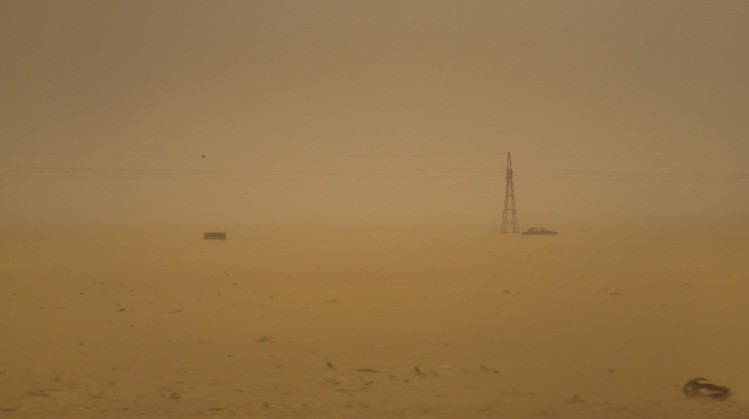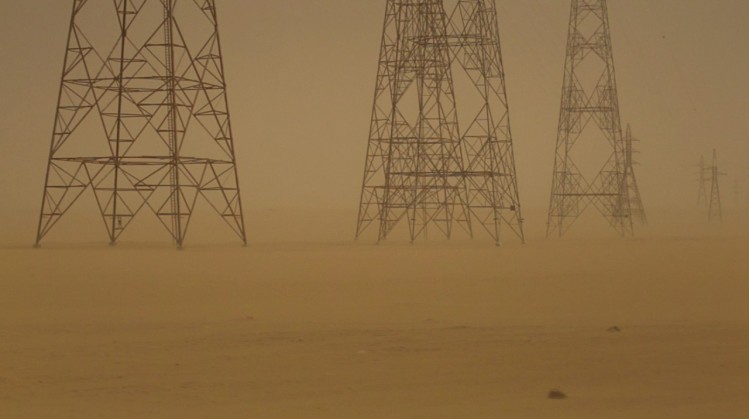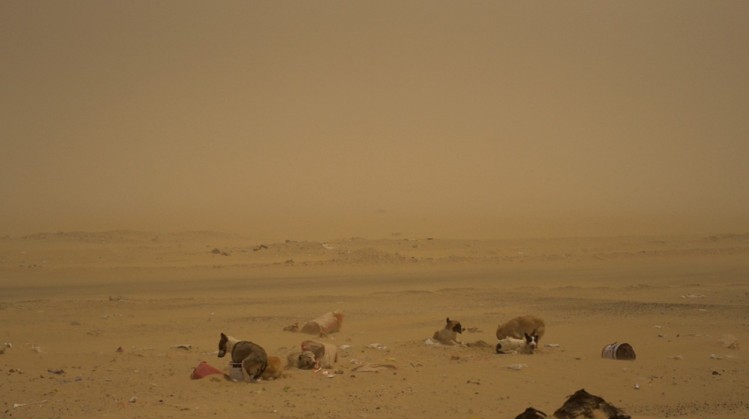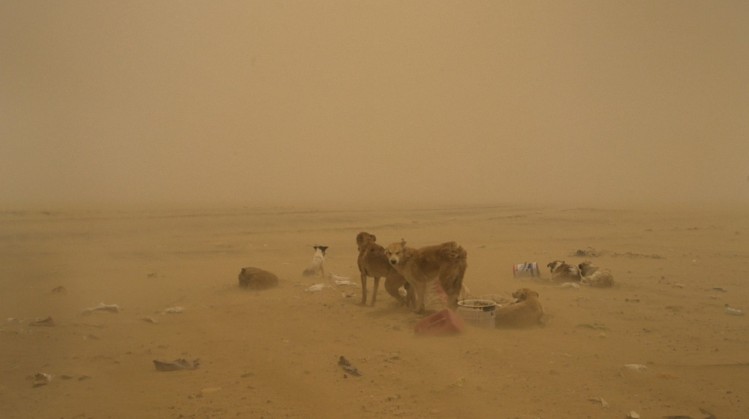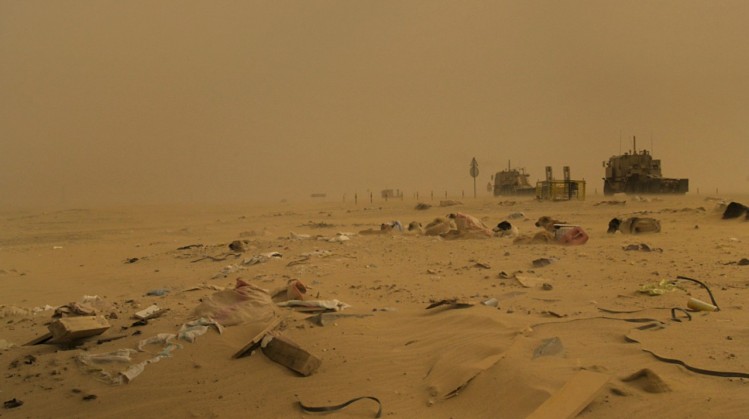WIM CATRYSSE
MSR
Date: 2014
Length: 15:00 min.
Format: 16:9
Specifications: Farbe, Ton, Einkanal
Courtesy the artist
Auf den Straßen von Kuwait geht die Fahrt Richtung Westen, vorbei an Militärbasen und einer Reihe Öltransportern. Triste Tonfolgen drängen aus dem Autoradio. Inmitten von Müllbergen am Straßenrand sucht ein Rudel wilder Hunde im Sand Schutz vor dem Wind. Wim Catrysse inszeniert die Wüste Kuwaits als postapokalyptisches Setting und als Protagonistin zugleich. Während der Fahrt wird das Autofenster zur Hürde, die von der Leinwand noch einmal verstärkt wird. Das Publikum, in die Wüste verfrachtet, dringt hinter dem Fenster am Ende doch nicht zu ihr durch. MSR, das ist die Main Supply Route, die Hauptstraße über die Militär-Operationen im Golf-Krieg 1990/91 und im Irak-Krieg 2003 koordiniert wurden. Filmen ist hier untersagt. Das Rudel wilder Hunde wird somit vorerst Träger der Handlung, doch lenkt es den Fokus durch sein Verhalten immer wieder auf die Wüste als Hauptdarstellerin. Unterstützt von der Tonspur erweckt diese durch ihre lebensfeindliche Erscheinung den Eindruck einer Art dystopischer Überzeitlichkeit, die an filmische Endzeitszenarien erinnert und es dem Publikum unbequem macht. Catrysse studiert Konventionen, in politisch-dogmatischer sowie in filmischer Hinsicht.
Nathalie Ladermann
* 1973 in Löwen BEL, lebt und wohnt in Antwerpen BEL
Studium am ESA St-Luc Bruxelles BEL, Higher Institute for Fine Arts, Anvers BEL und The Glasgow School of Art GBR
Interview:
» 1. Your work has been chosen among over 1200 festival entries to participate in VIDEONALE.15. In which context do you prefer to present your work, festival/cinema context or exhibition? And what kind of difference does the respective mode of presentation mean for you / your work?
Primarily in the context of the exhibition. In the first instance I handle the medium as an artist and less, I guess, as a filmmaker;
although I think both ways of approach are closely related. In the context of an exhibition, the beginning and ending of a filmic work are not as theatrical as in a cinema setting where these notions are inevitably perceived as a structural part of a narration. And given film does not necessarily embodies a ’story‘, I regard the exhibition model as a more liberated context.
» 2. How do you see “The Call of the Wild“ reflected in your work presented at VIDEONALE.15?
‚The call of the wild‘ exhibits a certain hankering towards an untamed, irrational or disordered world. ‚MSR‘ puts the focus on the travails and tactics of ’survivors‘, i.e. a pack of stray dogs that dwells within the boundaries of an antagonistic world: a dystopian desertscape. In order to outlive an enraged desert storm this apparently displaced community seeks shelter behind scattered pieces of waste on a semi-dumping site—an unmistakable legacy of yet another world.
» 3. Can you describe your intention for doing art in one sentence?
Given that throughout the creative process intentions are often at odds with their outcome, I often leave them for what they are.
» 4. In which way is the video medium an excellent possibility to express your intended subjects, especially in contrast to other media you use? Or do you work exclusively with video?
Video – a vehicle that bears the ability to perceive and compose conceptions anew – is not merely a medium to express; it is unavoidably a subject matter in itself.
» 5. If you have the chance to ask the visitors of the VIDEONALE.15 exhibition questions about your own work, what would be your question?
At the risk of sounding inconsiderate: The work, which acts on various levels, raises plenty of questions and makes, at best, further questions on my part redundant.
